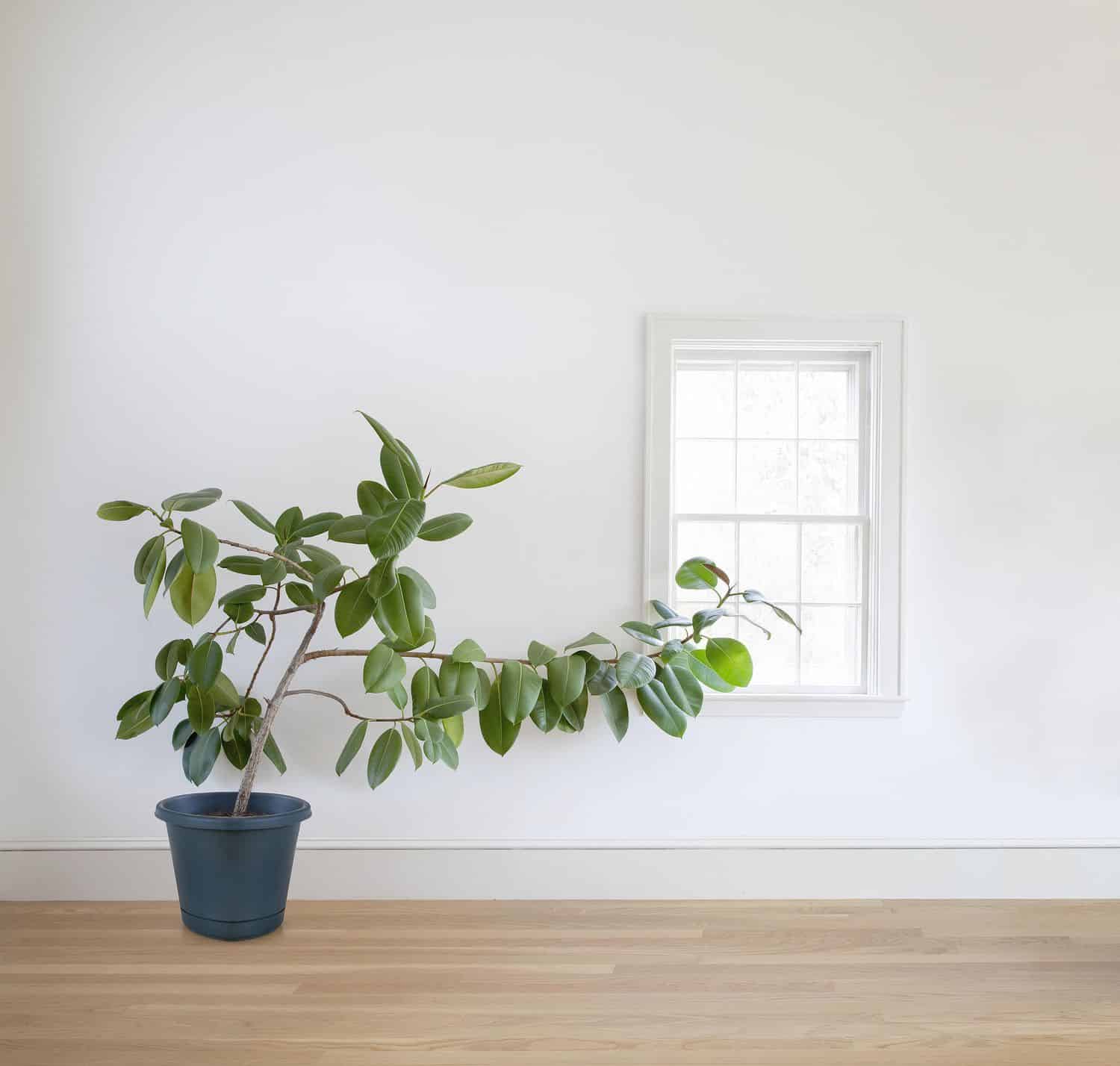House plants grow towards the window because they seek light. This process is called phototropism.
Plants need light to perform photosynthesis, which is essential for their growth and survival. Windows provide a natural source of sunlight, which indoor plants crave. As a result, they bend or grow towards the light source to maximize their exposure.
This behavior helps them produce the energy they need to thrive. Understanding this natural tendency can help plant owners position their plants more effectively. By placing plants near windows, they can ensure the plants receive adequate light. This promotes healthier growth and vibrant greenery in indoor spaces. Proper light exposure is crucial for the well-being of house plants.
Introduction To Plant Behavior
Plants have unique ways of growing. They show amazing behaviors. One interesting behavior is growing towards the window. This is not random. It follows specific rules of nature.
Natural Growth Patterns
Plants grow towards light. This process is called phototropism. Light is essential for photosynthesis. Plants need it to make food.
They use auxins to grow towards the light source. Auxins are plant hormones. They help in cell elongation. More light means better growth.
Common Observations
You might have seen plants leaning towards windows. This is common in homes and offices.
Here are some common observations:
- Plants near windows grow faster.
- They lean towards the light source.
- Leaves are greener on the lit side.
- Stem and leaves adjust their positions.
This behavior ensures they get maximum light. It helps them thrive indoors.
The Role Of Light
House plants often lean towards windows. This behavior is fascinating. It all comes down to light. Light is essential for plants. It helps them grow and thrive. Let’s explore why light is so important.
Light As A Resource
Plants need light to make food. This process is called photosynthesis. Without light, plants can’t survive. They will search for light to stay healthy. Windows are a great source of light.
Sunlight provides plants with energy. This energy helps them grow. Plants have special cells to detect light. These cells are called photoreceptors. Photoreceptors guide plants towards the light source.
Types Of Light
Not all light is the same. There are different types of light. Let’s look at a few:
- Natural Light: Comes from the sun. It’s the best type of light for plants.
- Artificial Light: Comes from bulbs and lamps. It can also help plants grow.
- Indirect Light: Light that is filtered. It is not as strong as direct sunlight.
Each type of light affects plants differently. Natural light is usually preferred. It has the right spectrum for photosynthesis.
Phototropism Explained
Have you ever noticed your house plants growing towards the window? This fascinating phenomenon is called phototropism. It allows plants to maximize their exposure to light, essential for photosynthesis and growth. Let’s explore phototropism in detail.
What Is Phototropism?
Phototropism is the growth movement of plants in response to light. Plants grow towards or away from light sources. This helps them optimize light absorption. Positive phototropism means growing towards light. Negative phototropism means growing away from light. Most house plants exhibit positive phototropism.
Mechanism Of Phototropism
The mechanism behind phototropism involves plant hormones called auxins. These hormones regulate plant growth. Here’s a simple breakdown:
| Step | Description |
|---|---|
| 1 | Light is detected by the plant’s cells. |
| 2 | Auxins move to the shaded side of the plant. |
| 3 | Cells on the shaded side grow faster. |
| 4 | The plant bends towards the light. |
This process ensures that the plant’s leaves receive maximum light. Photosynthesis then occurs more efficiently. This is crucial for the plant’s energy production.
- Light detection by plant cells
- Movement of auxins to the shaded side
- Faster growth of shaded side cells
- Bending towards the light
Understanding phototropism can help you care for your house plants better. Place them where they can get adequate light. Rotate them occasionally for even growth.

Credit: www.reddit.com
Hormonal Influence
House plants often grow towards the window. This phenomenon is due to hormonal influence. The key hormones involved are called auxins. These hormones play a crucial role in plant growth and direction.
Auxins And Growth
Auxins are growth hormones found in plants. They help plants grow in the right direction. Auxins are usually located in the tips of the plant. They move towards the shaded side of the plant. This movement causes the plant to bend towards the light.
This bending action is called phototropism. Light affects the distribution of auxins. The plant grows faster on the shaded side. This makes the plant lean towards the light source.
Distribution Of Hormones
The distribution of auxins is crucial for plant growth. Auxins collect more on the side away from the light. This uneven distribution makes one side grow faster. The plant then bends towards the window.
Below is a simple table showing how auxins affect growth:
| Light Side | Shaded Side |
|---|---|
| Less Auxins | More Auxins |
| Slower Growth | Faster Growth |
- Auxins move away from light.
- Shaded side grows faster.
- Plant bends towards light.
Understanding these hormonal influences helps in better plant care. Knowing how auxins work can guide you in placing your plants. Position them for optimal light exposure and health.
Environmental Factors
Houseplants are fascinating, especially how they grow towards windows. This behavior is due to various environmental factors. These factors play a crucial role in plant growth and direction.
Impact Of Light Intensity
Light intensity significantly influences plant growth. Plants need light to produce food through photosynthesis. High light intensity near windows attracts plants.
Light intensity decreases as you move away from windows. This makes plants grow towards the light source. A table below explains light intensity at different distances:
| Distance from Window | Light Intensity (in Lux) |
|---|---|
| 0-1 feet | 10,000 Lux |
| 1-2 feet | 5,000 Lux |
| 2-3 feet | 2,500 Lux |
Effect Of Light Direction
Light direction also affects plant growth. Plants sense the direction of light. This process is called phototropism. Plants grow towards the light to maximize energy intake.
Windows are usually the primary light source in homes. Therefore, plants bend and grow towards them. This ensures they get the most light possible.
In summary, light intensity and light direction are key environmental factors. They determine how and why houseplants grow towards windows.

Credit: www.gardenersworld.com
Adapting To Indoor Settings
House plants need to adjust to indoor settings. They often grow towards windows. This behavior helps them get the light they need. Indoor environments present unique challenges for plants.
Challenges For House Plants
Indoor settings lack natural light. Windows are the main source of sunlight. Limited space restricts their growth. Indoor air can be dry and lacks humidity. House plants face temperature fluctuations.
Strategies For Survival
Plants grow towards windows to get more sunlight. This process is called phototropism. It helps them maximize light absorption.
- Plants bend towards light
- Leaves angle to catch more light
- Roots grow deeper for stability
House plants also develop larger leaves. This helps them capture more light. They adapt their growth patterns to indoor spaces.
Providing proper care is essential. Regular watering, correct placement, and good soil help plants thrive.
Optimizing Plant Growth
House plants often grow towards the window. This is because they seek light. Optimizing plant growth involves understanding their needs and providing the best conditions.
Ideal Placement
Place your plants near windows. This allows them to get enough light. Morning sunlight is gentle and ideal for many plants. West-facing windows can provide more intense light. Be careful, as too much direct sunlight can burn some plants.
Here is a simple table to help you choose the best window for your plants:
| Window Direction | Light Intensity | Best Plants |
|---|---|---|
| North | Low | Ferns, Pothos |
| East | Medium | Spider Plants, Peace Lilies |
| South | High | Cacti, Succulents |
| West | High | Ficus, Rubber Plants |
Use Of Grow Lights
Sometimes, natural light may not be enough. Grow lights can help your plants thrive. These lights mimic sunlight and provide the necessary light spectrum.
Here are some types of grow lights you can use:
- Fluorescent Lights: Good for low-light plants.
- LED Lights: Energy-efficient and versatile.
- Incandescent Lights: Not recommended; they produce too much heat.
Place grow lights about 6-12 inches above the plants. Leave them on for about 12-16 hours a day. This will ensure your plants get enough light to grow well.

Credit: www.walmart.com
Frequently Asked Questions
Why Do Some Indoor Plants Curve To Face A Window?
Indoor plants curve to face a window to receive more light. They naturally grow towards the light source, a process called phototropism. This helps them maximize photosynthesis and stay healthy.
Should Indoor Plants Be Near A Window?
Yes, indoor plants should be near a window. They need natural light to thrive and grow well. Ensure they get indirect sunlight to avoid leaf burn.
Why Do Plants On A Windowsill Bend Toward The Window?
Plants on a windowsill bend toward the window due to phototropism. They grow towards light for better photosynthesis.
What Window Direction Is Best For Indoor Plants?
South-facing windows are best for indoor plants. They offer bright, indirect sunlight, ideal for most houseplants.
Conclusion
Houseplants grow towards the window to seek light. This phenomenon, called phototropism, helps them maximize photosynthesis. By understanding this natural behavior, you can position your plants for optimal health. Ensure your plants receive adequate light to thrive and flourish indoors.
Happy gardening!

My mission is to help you bring the beauty of nature indoors with expert advice, detailed plant care guides, and creative design ideas.





Leave a Reply